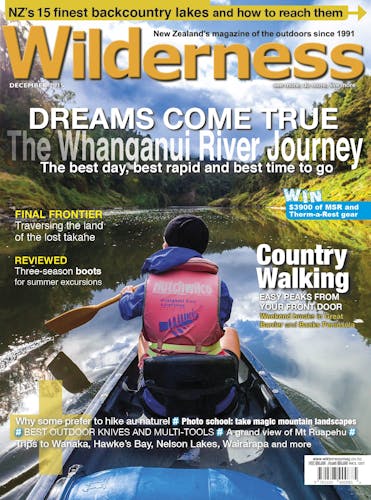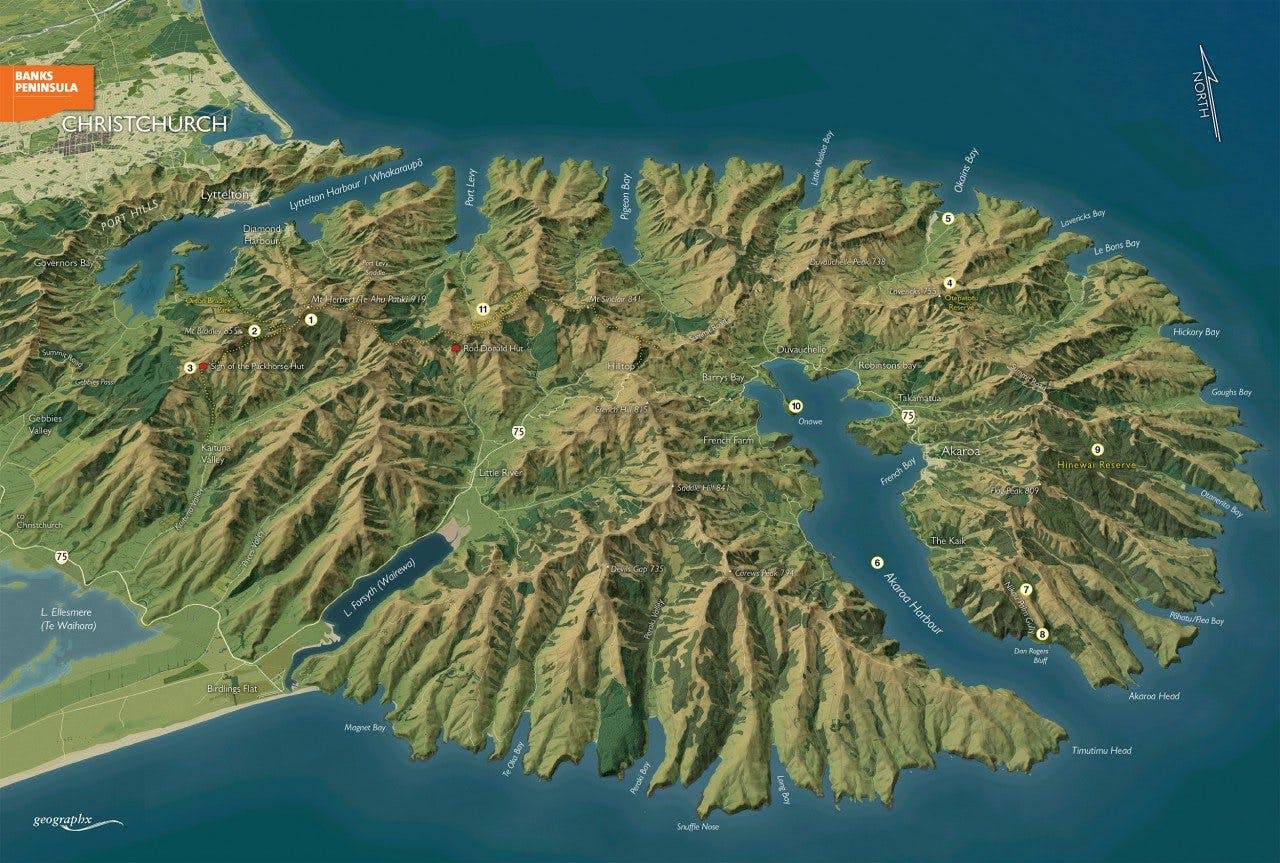Like a giant thumb, Banks Peninsula juts 30km into the Pacific Ocean from the Canterbury coastline creating its own climate and a unique habitat.
Two giant calderas, now open to the sea, have been formed here by the collapsed cones of the Lyttelton and Akaroa volcanoes which it is estimated once reached well over 1500m. Before the arrival of Maori, and later Europeans, the landscape was almost entirely covered in forest and teeming with birdlife. Now, however, there are only remnant forests, most of which are contained in protected native reserves and form part of the intrinsic appeal of a visit to the peninsula, along with the many short trails which link them to the Summit Road and the additional coastal trails that provide access to various beaches and headlands.
Add in sea kayaking, rock scrambling, fossicking, picnicking, and camping and you have the perfect weekend escape destination just 90 minutes from Christchurch.
1. Mt Herbert
At 919m, the peninsula’s highest summit can be climbed from north, south, east or west, mostly on marked trails. A small day shelter is located on its south-west side overlooking Lyttelton Harbour. Summit views stretch from the Seaward Kaikouras to Aoraki/Mt Cook.
2. Mt Bradley
Nearby Mt Bradley, 855m, is the second highest summit and is guarded by a ring of volcanic bluffs requiring some dexterity to scramble through. A traverse of both peaks can be done in a long day.
3. Packhorse Hut
This historic stone shelter has been turned into a tramper’s hut and is popular with weekend walkers for its grand views of the harbour and plains; it also has several approach tracks and could be used for accommodation during a traverse of the high peaks. bookings are required through DOC’s booking system.
4. Otepatotu Reserve and Lavericks
Located between Le Bons Bay and the head of Akaroa Harbour, Otepatotu Reserve is typical of the many native reserves which dot Banks Peninsula. Small, tracked and with roadside picnic area and viewpoints, these forested reserves show what the peninsula would have been like in bygone days.
5. Okains Bay
Perhaps the region’s most well-known ocean beach. It has a large and flat sandy shore with adjacent campsite. Nearby is the Maori and Colonial Museum. The bay is quiet and isolated except during Waitangi Weekend when a waka landing and recognition of the treaty is enacted.
6. Akaroa Harbour
Any visit to the Peninsula should include a closer ‘sea-view’ of the beautiful harbour, preferably by kayak. Adventurers can ride the ocean swells, check out the latest foreign vessels, including huge cruise ships, inspect sea caves and gape at the massive volcanic headlands that guard the harbour. You may even spot Hector’s dolphin or migrating orca.
7. Nikau Palm Gully
A small yet spectacular reserve located inside Akaroa Harbour, this beautiful remnant is a habitat for nikau palms which reach their southernmost limit here. There is a short track into the reserve.
8. Dan Rogers Bluff
Another small reserve and home to several native bird species including the little white flippered penguin. The reserve is bordered by the peninsula’s highest sea cliffs, Dan Rogers Bluff, 275m.
9. Hinewai Reserve
A private nature reserve, well tracked and containing an information centre, Hinewai has become a showcase for what is achievable for conservation within the peninsula environs.
10. Onawe Peninsula
This beautiful peninsula is volcanic in origin and provides a fascinating lesson into the geologic and pre-European history of the region. It was once the site of a Maori pa and some of the excavations and fortifications can still be seen.
11. Spine of the Lizard
This walkway over the summits of Banks Peninsula from Mt Sinclair, near Hilltop, to Mt Herbert, and on to either Gebbies Pass, Orton Bradley, Port Levy Saddle or Diamond Harbour in Lyttelton Harbour, has been tentatively named Spine of the Lizard. It’s spectacular and traverses through several native reserves.








